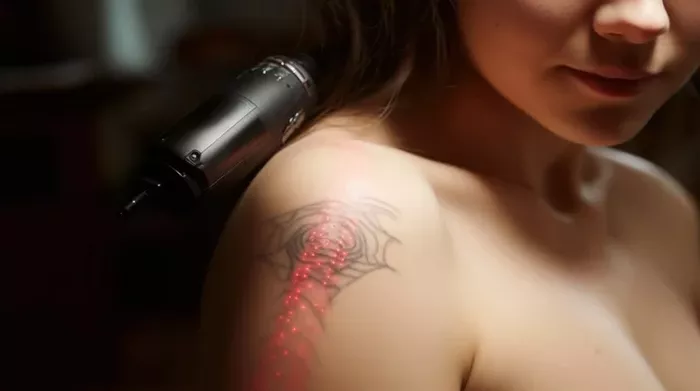Getting a tattoo is an exciting experience, but proper aftercare is crucial to ensure that the tattoo heals well and maintains its intended appearance. One common issue many people encounter during the healing process is itching and the temptation to scratch the tattoo. This article will delve into what happens when you scratch a tattoo, including its impact on the healing process, potential risks, and effective treatments for those who accidentally scratch their tattoos.
Healing Process of the Tattoo
When you get a tattoo, the process involves inserting ink into the dermal layer of your skin. This procedure essentially creates an open wound, as the needle punctures the skin repeatedly to deposit the ink. As with any wound, your body initiates a natural healing process to repair the skin.
Initial Healing: Right after getting a tattoo, your skin will start to heal from the inside out. This phase involves inflammation and the formation of a protective barrier, including the formation of scabs. Scabs are a normal part of the healing process and serve to protect the delicate new skin and ink.
Scab Formation: Scabs form over the tattoo as part of the body’s defense mechanism. They act as a natural bandage, shielding the tattooed area from bacteria, dirt, and other external contaminants while the underlying skin regenerates.
Why Tattoos Itch
Itching is a common sensation experienced during the healing of a new tattoo. This itching can be attributed to several factors:
Scabbing: Scabs are the primary reason why tattoos itch. As the skin heals, scabs form over the tattooed area to protect it. This process involves the immune system’s response to the wound, and the presence of scabs can cause the skin to feel itchy.
Healing Process: Itching is a natural part of the skin’s recovery process. As the skin regenerates, nerve endings may become more sensitive, leading to the sensation of itchiness. This response is usually temporary and should subside as the skin heals.
What Does Scratching a Tattoo Do
Despite the temptation, scratching a tattoo can have several adverse effects on the healing process:
Extended Healing Time: Scratching a tattoo can disrupt the natural healing process, causing the scabs to come off prematurely. This can extend the overall healing time, as the skin may need additional time to repair itself.
Increased Risk of Infection: Scratching can introduce bacteria and other contaminants into the open wound, increasing the risk of infection. An infection can lead to complications, including swelling, redness, and pus, and may require medical treatment.
Altered Tattoo Appearance: Scratching can also affect the appearance of the tattoo. Removing scabs prematurely can cause the ink to fade unevenly or result in patches where the ink does not settle properly. This can impact the overall look of the tattoo and may require touch-ups.
SEE ALSO: What to Do When Your Tattoo Starts Peeling
Essential Tips for Avoid Scratching
It is crucial to resist the urge to scratch a healing tattoo. Instead, consider the following strategies to manage itching and discomfort:
Stay Hydrated: Keeping your skin hydrated is essential for the healing process. Drink plenty of water to maintain skin elasticity and overall health.
Moisturize: Regularly applying a fragrance-free moisturizer can help soothe itching and keep the skin hydrated. Look for lotions specifically designed for tattoo aftercare to ensure they are safe for the healing skin.
Use a Cool Compress: If itching becomes unbearable, apply a cool compress to the area. This can help alleviate discomfort and reduce inflammation without damaging the tattoo.
Avoid Tight Clothing: Wearing loose, breathable clothing can prevent irritation and reduce the urge to scratch. Tight clothing can rub against the tattoo, causing additional discomfort and potential damage.
Treatment for Accidental Scratching
If you accidentally scratch your tattoo, follow these aftercare instructions to minimize damage and promote healing:
Immediate Steps
Wash the Area: Gently wash the scratched area with antibacterial soap and lukewarm water. Avoid using hot water, as it can further irritate the skin. Use a mild, fragrance-free soap to prevent additional irritation.
Pat Dry: After washing, gently pat the area dry with a clean towel. Avoid rubbing or scrubbing the tattoo, as this can cause further irritation.
Apply Aftercare Cream: Apply a thin layer of aftercare cream, such as A+D First Aid Ointment or Aquaphor Healing Ointment. These products help to soothe the skin and promote healing. Be sure to use a product specifically designed for tattoo aftercare.
Relieve Itchiness: To relieve itchiness, consider using a fragrance-free lotion or applying a cool compress. Avoid using products that contain alcohol or other irritants, as these can worsen itching and discomfort.
Monitoring and Consultation
Watch for Signs of Infection: Keep an eye on the tattooed area for any signs of infection, such as increased redness, swelling, pus, or severe pain. If you notice any of these symptoms, seek medical advice promptly.
Consult a Professional: If you are concerned about the condition of your tattoo or need additional guidance, consult with a professional tattoo artist or dermatologist. They can provide personalized advice and address any issues related to the healing process.
Conclusion
Understanding the impact of scratching a tattoo and following proper aftercare practices is essential for ensuring a successful healing process. A new tattoo is essentially an open wound, and scabs play a crucial role in protecting the skin and promoting healing. While itching is a natural part of the healing process, scratching can extend healing time, increase infection risk, and alter the tattoo’s appearance.
By resisting the urge to scratch and following recommended aftercare steps, you can help ensure that your tattoo heals properly and maintains its intended look. Proper care, including washing the area, applying aftercare cream, and managing itchiness, can contribute to a smooth healing process and preserve the beauty of your tattoo for years to come.
Related Topics

